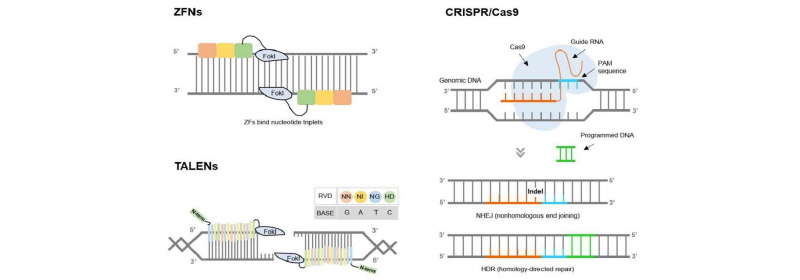Abstract
The ability to edit a specific locus in a genome based on targeted DNA nucleases will greatly facilitate our understanding of the function of a gene in biological research, and have many practical uses in animal biotechnology and biomedicine. Recent advances, including clustered regularly interspaced short palindromic repeats (CRISPR)- CRISPR-associated protein 9 (Cas9), have substantially increased the efficiency of precise genome editing in a targeted manner. Therefore, this system has been successfully adopted for highly efficient genetic modification in diverse organisms, including animals, plants and humans, and is applicable to the efficient production of transgenic animals and model animals, as well as to breeding and research involving therapeutic potential. In addition, a base editing system has been recently developed and utilized for precise base conversion. It is composed of catalytically dead Cas9 (dCas9) and cytidine deaminase that enables both highly targeted single-base changes and local sequence diversification without double-stranded DNA cleavage. In this review, we introduce the development of genome editing technologies based on targeted DNA nucleases and the recently developed base editing system, and highlight successful research achievements indicating the potential use of programmable genome editing tools in fields of animal biotechnology.
Acknowledgements
This work was supported by grants from the Creative Research Initiatives Program (NRF-2015R1A3A2033826) and Basic Science Research Program (NRF-2017R1D1A1B03029512) funded by the Korean government. Funders had no role in design of the study or in writing of the manuscript.
Figures & Tables

Development and principles of genome editing technologies: zinc finger nucleases (ZFNs), transcription activator-like endonucleases (TALENs) and clustered regularly interspaced short palindromic repeats (CRISPR)- CRISPR-associated protein 9 (Cas9). Recent advances, particularly the CRISPR-Cas9 system, have become some of the most powerful tools for genome editing to date by enhancing the DNA mutation rate through the creation of a double-stranded DNA break (DSB) at a specific locus in the genome and highly efficient genetic modification in a targeted manner. Today, almost every scientist in the world can conduct genome editing experiments to create new developments and opportunities in any animal species.


